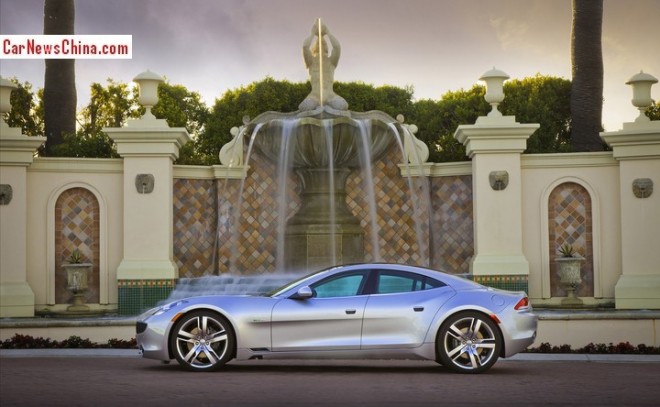Wanxiang America Corporation (WAC), a US subsidiary of Wanxiang Group, the largest auto-parts company in China, emerged as the winner of the bankruptcy auction for the assets of hybrid-sports carmaker Fisker Automotive.
Wanxiang’s bid has a value of approximately $149.2 million, representing $126.2 million in cash, $8 million of assumed liabilities and a contribution of common equity in an affiliate designated by Wanxiang to acquire the assets of Fisker, according to a Fisker statement.
Winning the Fisker deal is both an addition to Wanxiang’s business portfolio and a “challenge” for the Chinese company which, according to Wanxiang America’s president Ni Pin, will spend some time pulling it together.
“It is a very significant step but also very challenging,” Ni told China Daily.
The deal is expected to be approved by Judge Kevin Gross of the US Bankruptcy Court in Wilmington, Delaware on Tuesday.
After Tuesday’s court decision, the deal still needs some regulatory approvals by the government, including over antitrust laws.
“We don’t see any problems or issues, but it is just a process,” Ni said.
Wanxiang entered the US market in 1994 and now has manufacturing operations in 14 states. Its US operations generate annual revenue of about $2.5 billion and employ 6,000 local people. Its parent company, Wanxiang Group in eastern China’s Hangzhou in Zhejiang province, was founded up by Lu Guanqiu, the son of a farmer, in a small bicycle repair shop in 1969.
Ni, the son-in-law of Lu, Wanxiang Group’s chairman, said Lu has long had the dream of expanding the giant auto-parts maker into a vehicle production business.
“Obviously this could be the right step for his dream,” said Ni.
Part of Wanxiang America’s business strategy is to do mergers and acquisitions in the US market. Last year, the auto-parts maker bought the bankrupt assets of A123 Systems for $257 million. A123 Systems makes Fisker batteries.
“This is a small business deal compared to other deals we have done in the US, but the difference is that it’s a consumer product – a high-end product – compared with other industrial products Wanxiang does,” Ni said of the Fisker deal.
The auction began on Wednesday and ended on Friday. It came after a bankruptcy court judge rejected the prepackaged bankruptcy plan last month. Wanxiang outbid Hybrid Tech Holdings, an affiliate of Richard Li, a Hong Kong-based billionaire and Fisker investor, who was reportedly eyeing the Fisker deal.
Wanxiang won it in the 19th round of bidding, paying a price almost six times higher than what Fisker sought when it filed for bankruptcy last November.
California-based Fisker was founded in 2007 by Henrik Fisker, a former BMW designer. The automaker spent $20 million in 2010 to take over an abandoned General Motors plant in Wilmington. Fisker, however, stopped its production in 2012 due to battery and finance shortages.
With about 20 people left in the company, Ni said, the issue now is to “rebuild the team”.
“There is a lot that needs to be done – it’s heavy-lifting – because it is a bankrupt company and it stopped production for a while,” Ni said. “We need to get things started again,” he added.
Wanxiang has been building a U.S. manufacturing presence and last year the U.S. government cleared it to acquire the bankrupt assets of A123 Systems Inc, which made Fisker batteries.
Both Fisker and A123 were funded in part with loans from the U.S. government that were meant to foster clean-fuel technologies. Wanxiang outbid Johnson Controls Inc for A123, and the Chinese company also overcame an active lobbying effort to block it from obtaining technology developed with U.S. taxpayer money.



